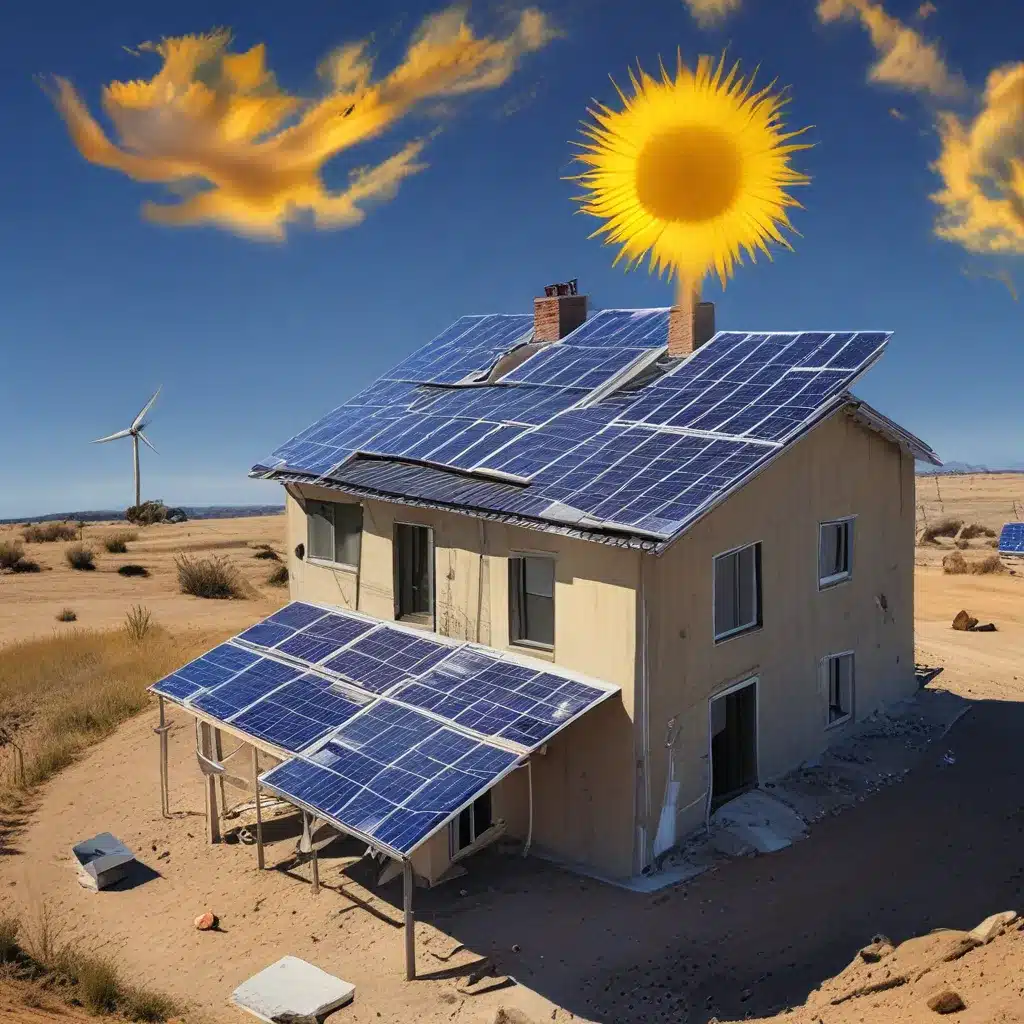
The Utility Paradox: Keeping the Lights On, at What Cost?
Imagine, if you will, a world where the electric grid is as reliable as the sun itself – constant, unwavering, and always there when you need it. A world where the power never goes out, no matter how many solar panels pop up on rooftops across the neighborhood. Sounds like a utopia, right? Well, for the utilities tasked with keeping the lights on 24/7, it’s more like a nightmare in the making.
You see, these utilities are the unsung heroes of our modern world, the ones who pour billions into maintaining and upgrading the vast network of poles, wires, and substations that deliver electricity to our homes and businesses. And they take their job very seriously – failure is not an option. After all, a single misstep could lead to a catastrophic grid failure, with severe financial and legal consequences.
But as the rise of solar energy starts to disrupt the traditional utility business model, these guardians of the grid are feeling the pressure. Declining demand, dwindling revenues, and the threat of being overshadowed by this newfangled renewable technology – it’s enough to make any utility executive lose sleep. So, in a desperate bid to maintain their grip on the power game, they’ve turned to a dubious tactic: fixed charges and minimum bills.
The Fixed Charge Fallacy
The argument for these fixed charges seems simple enough. After all, if most of the costs of running the grid are, well, fixed, shouldn’t the customer fees be fixed as well? It’s basic economics, right? Wrong.
As the former chairman of the Federal Energy Regulatory Commission, Jon Wellinghoff, and James Tong, the vice president of strategy and government affairs for Clean Power Finance, eloquently point out, “the statement that I have heard a number of times recently that the utility should cover fixed costs with fixed charges has no basis in economics when it comes to system fixed costs.”
Wellinghoff and Tong argue that fixed charges actually steer us away from smarter pricing, encouraging more inefficiency rather than less. You see, much of what utilities label as “fixed costs” is really just overcapacity or waste – infrastructure that’s going largely unused at any given time.
Instead of slapping on more fixed fees, Wellinghoff and Tong suggest we need to consider implementing dynamic or time-varying rates that align prices with when utilities actually incur their costs. This would not only strengthen historical fixed-cost recovery mechanisms but also reduce that ever-growing investment waste.
The Minimum Bill Mirage
But the utility’s bag of tricks doesn’t stop at fixed charges. No, they’ve also got another weapon in their arsenal: the minimum bill. The idea behind this one is to ensure that even the most ardent solar adopters can’t escape paying their “fair share” of the grid’s fixed costs.
As the Synapse Energy Economics report points out, minimum bills can effectively negate the financial benefits of going solar, especially for low-usage customers. And the kicker? These minimum bills are often designed in a way that disproportionately impacts those who can least afford it – the very people who could benefit most from the cost savings of solar.
It’s a classic case of robbing Peter to pay Paul, all in the name of protecting the utility’s bottom line. But as Wellinghoff and Tong so eloquently state, “Failure is not an option.” And in their quest to ensure the grid’s reliability, these utilities may just be threatening the very future of solar energy.
Distributed Energy Resources to the Rescue?
So, what’s the solution to this utility conundrum? Enter the world of distributed energy resources (DERs) – a veritable smorgasbord of technologies that could hold the key to a brighter, more efficient future.
As the National Renewable Energy Laboratory (NREL) report highlights, DERs like smart thermostats, rooftop solar, and electric vehicles can interact with grid market signals to help manage energy consumption and reduce grid costs. Imagine a world where your dishwasher automatically kicks into gear when energy prices are low, or your electric car knows the best times to charge and discharge its battery to support the grid.
The promise of DERs is vast, but as Wellinghoff and Tong point out, “Uncritical approval by regulators of fixed-charge proposals without considering market options would imply a lack of appreciation of the power of markets and DER technologies.” In other words, utilities and regulators need to stop clinging to the old ways and start embracing the potential of these innovative solutions.
Striking a Balance: Fairness, Efficiency, and the Future of Solar
At the end of the day, it’s all about finding the right balance. Utilities need to be fairly compensated for the essential service they provide, and customers should pay their fair share for using the grid. But as the Synapse Energy Economics report suggests, the current push for fixed charges and minimum bills may be doing more harm than good, threatening the very economics that make solar energy such an appealing option.
What we need are policies and pricing structures that encourage efficiency, innovation, and the growth of renewable energy. That means getting creative with time-varying rates, leveraging the power of DERs, and ensuring that the benefits and costs of the grid are distributed equitably.
It’s a tall order, to be sure, but the stakes are high. The future of solar energy – and perhaps the future of our entire energy system – hangs in the balance. So, let’s put on our problem-solving caps and get to work. After all, the grid’s reliability and the planet’s sustainability depend on it.
And who knows, maybe one day we’ll live in that utopian world of constant, unwavering power. But this time, the sun will be the one keeping the lights on.


